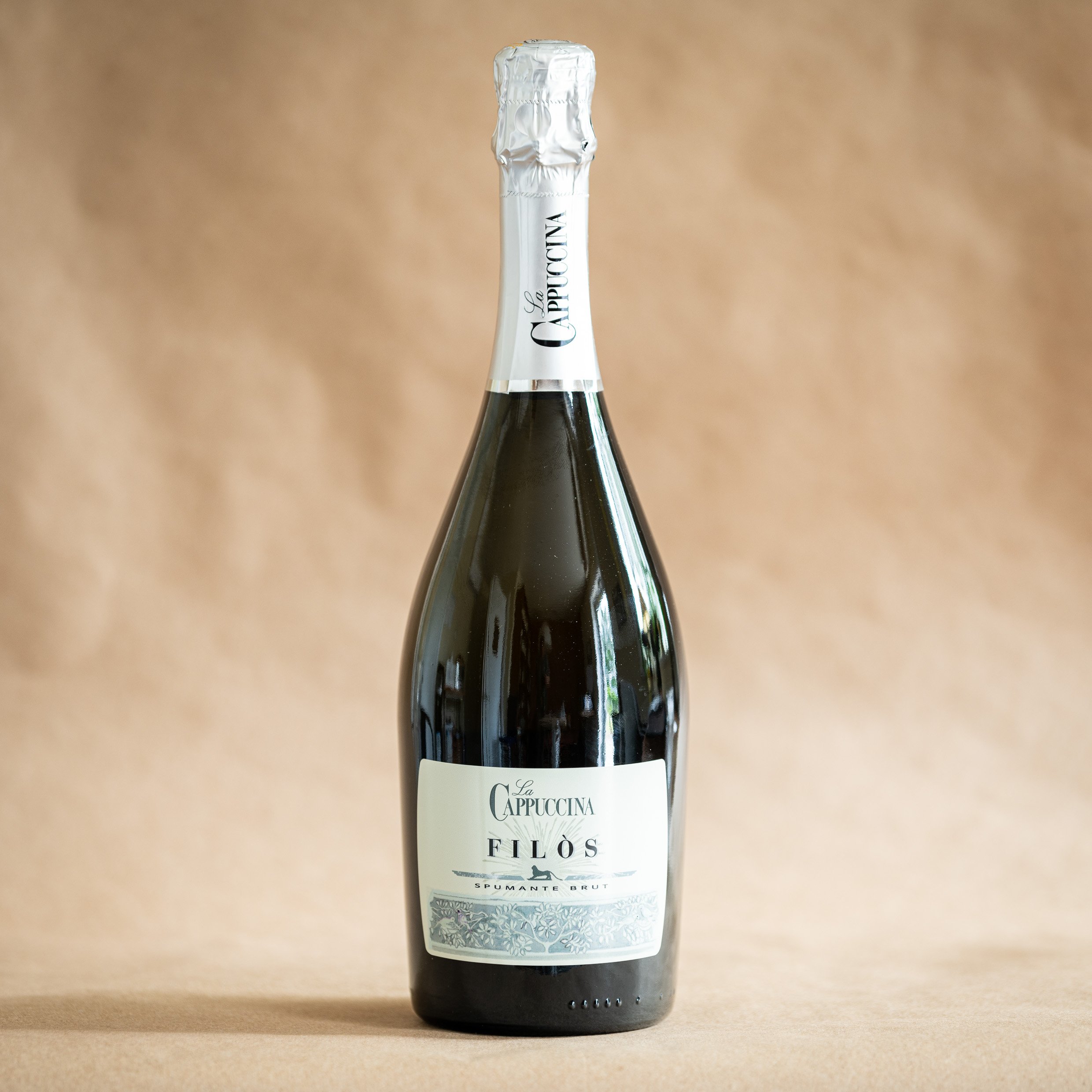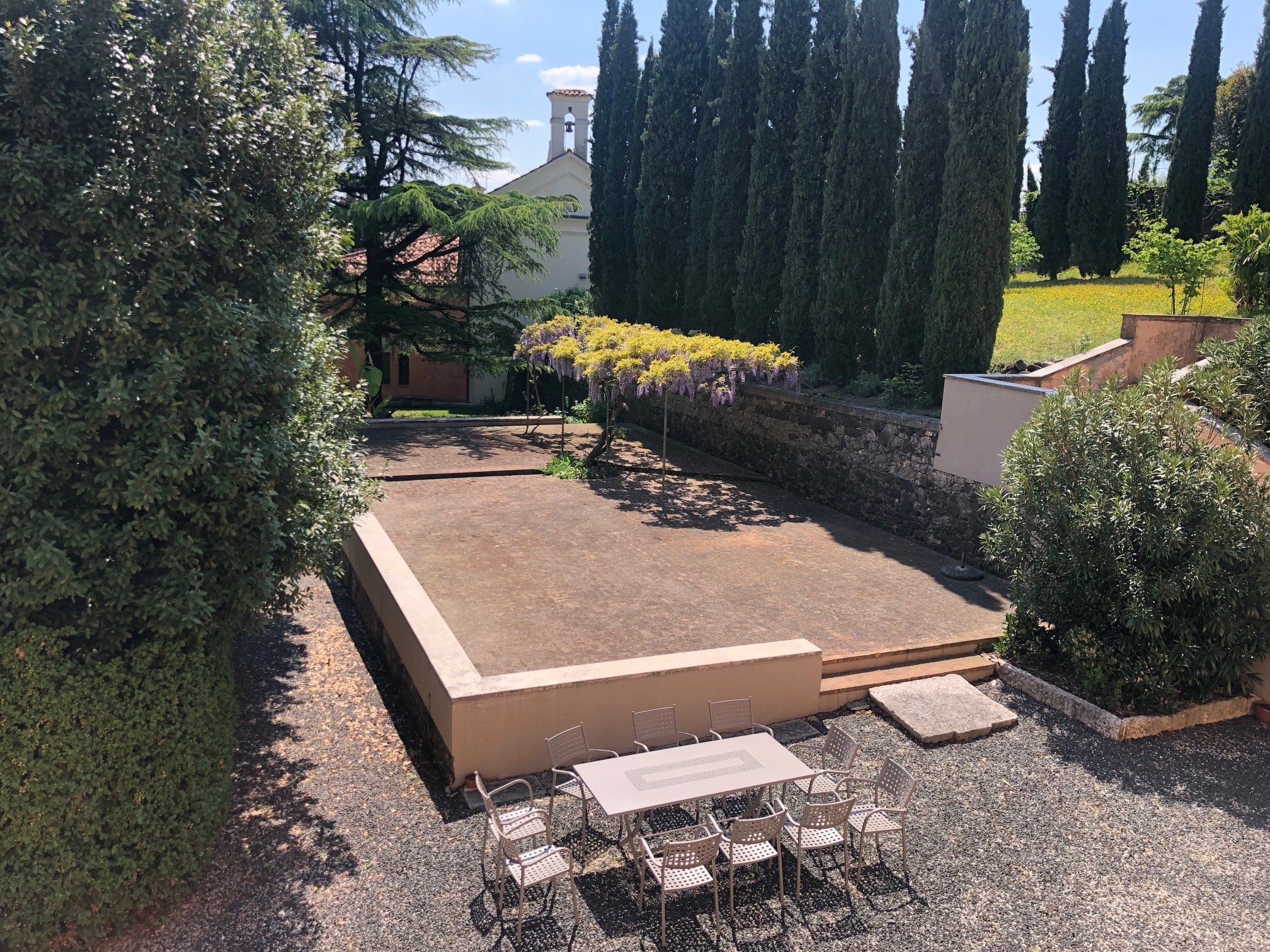
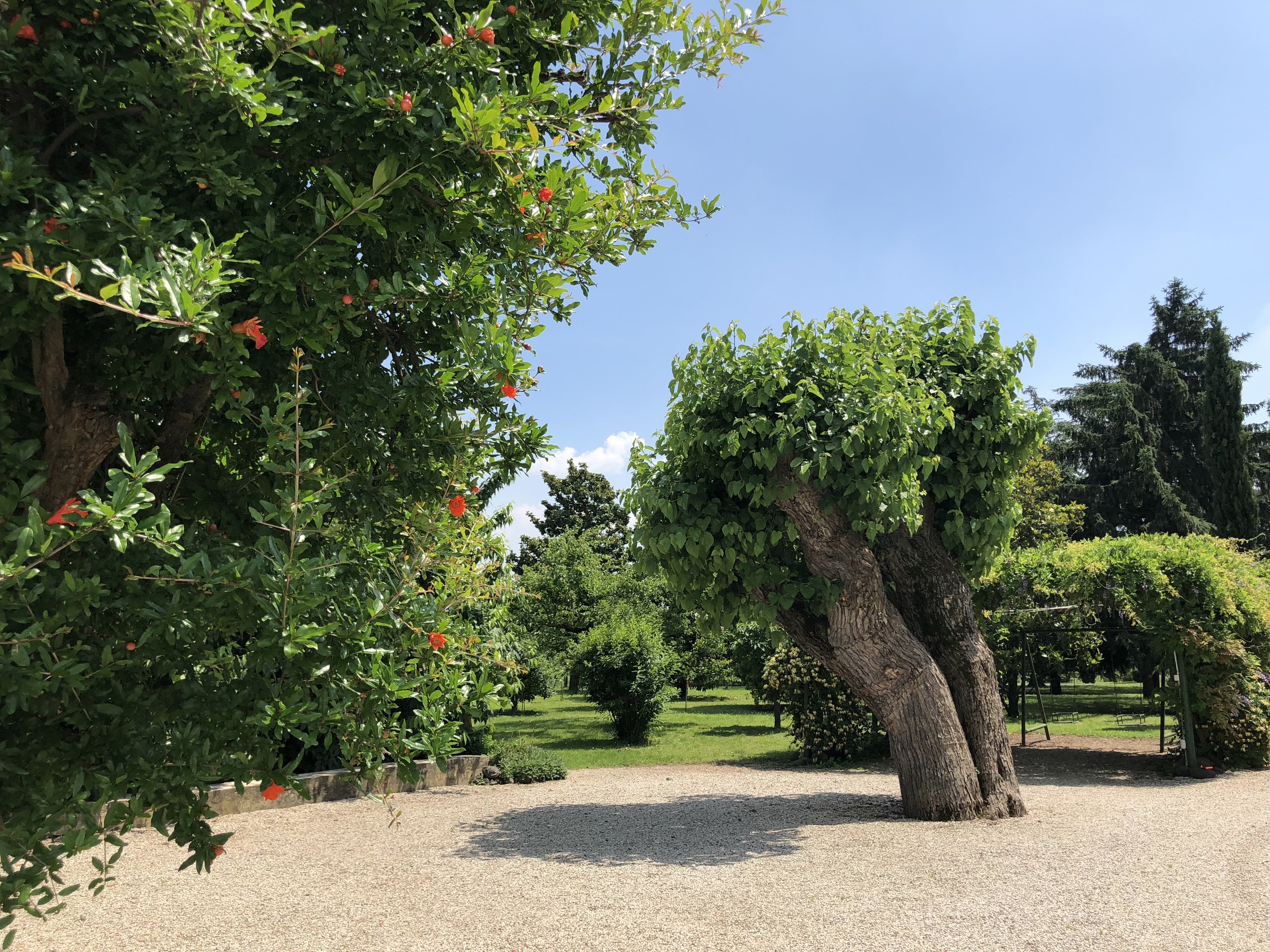
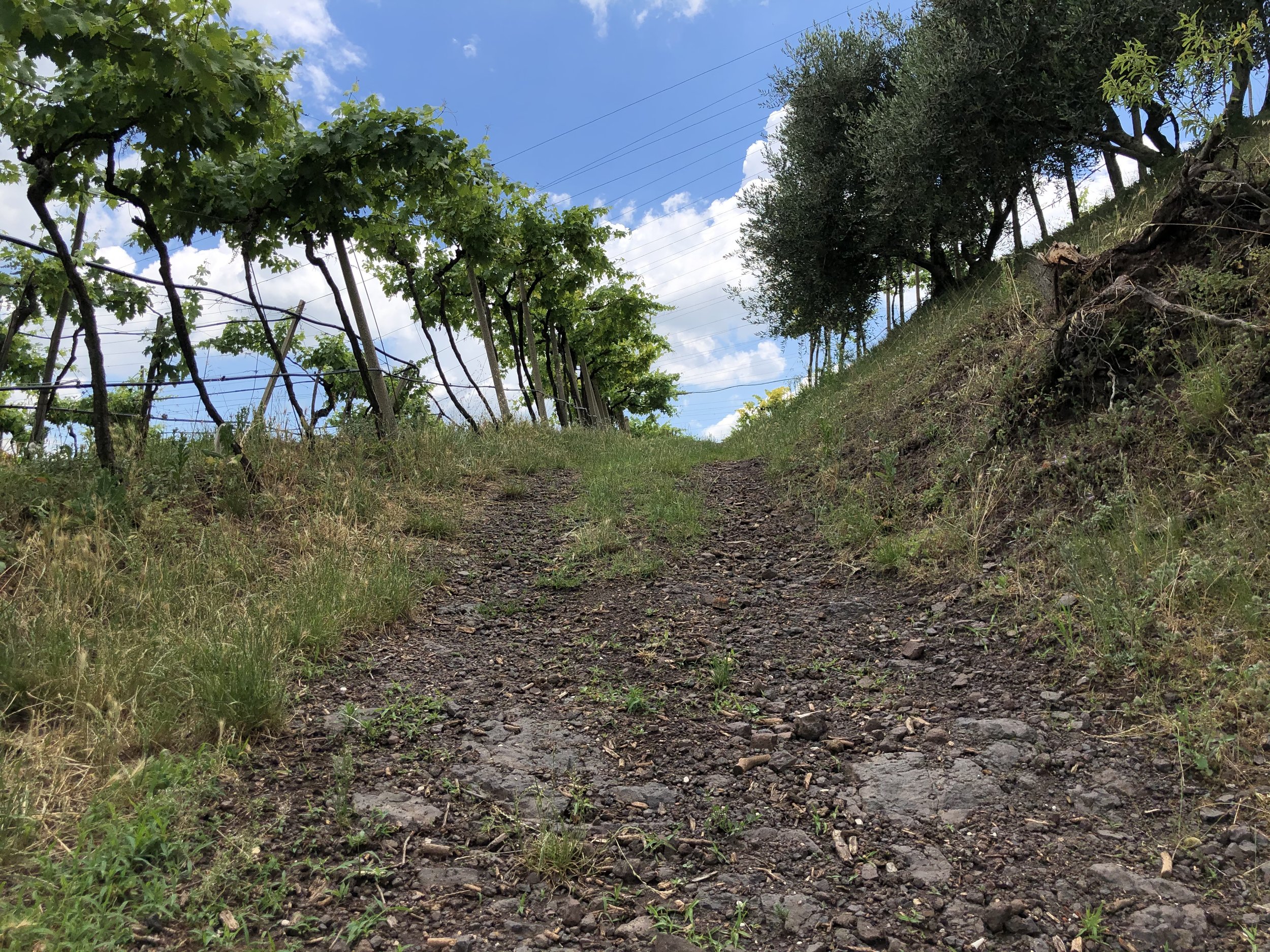
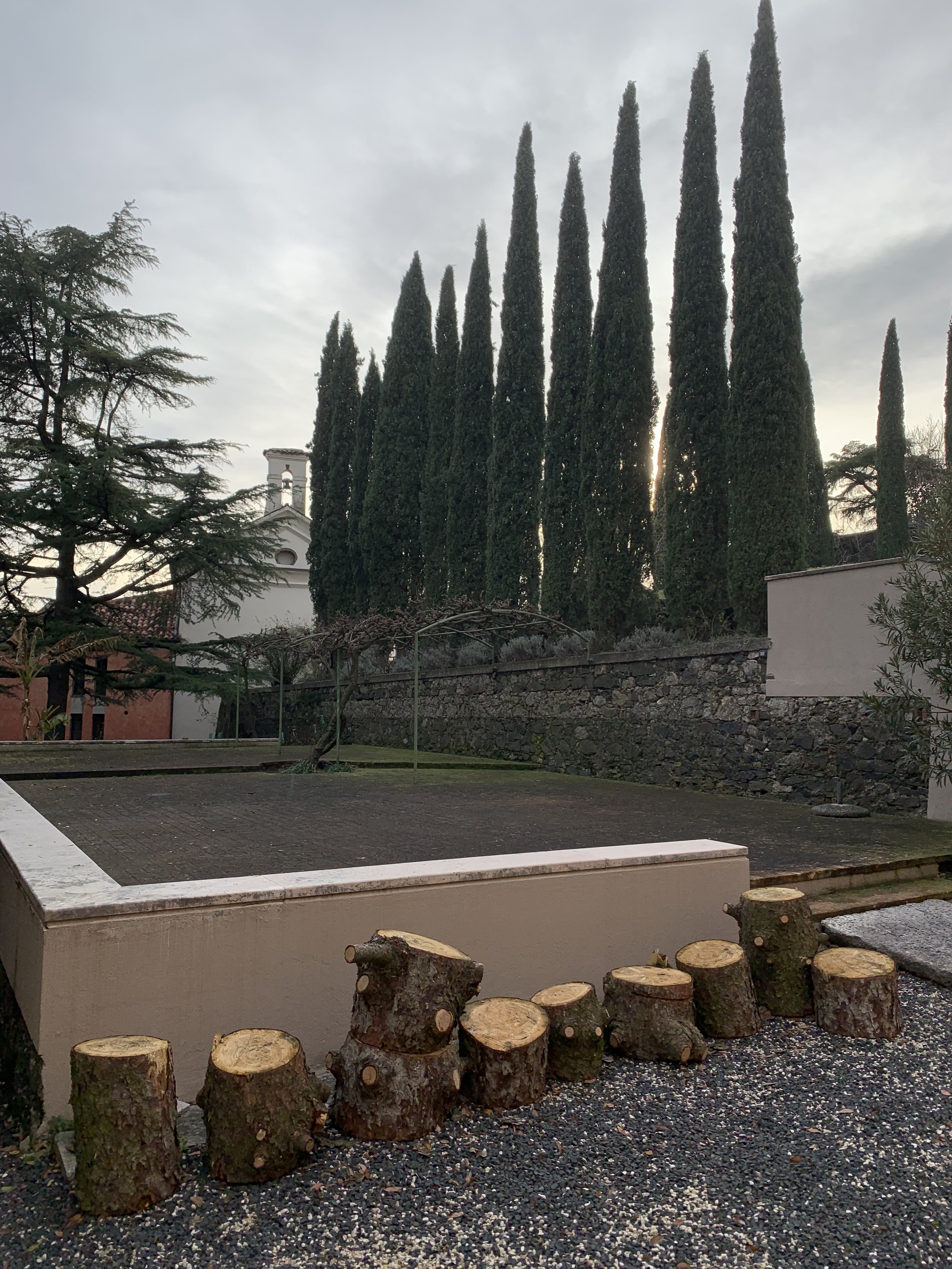
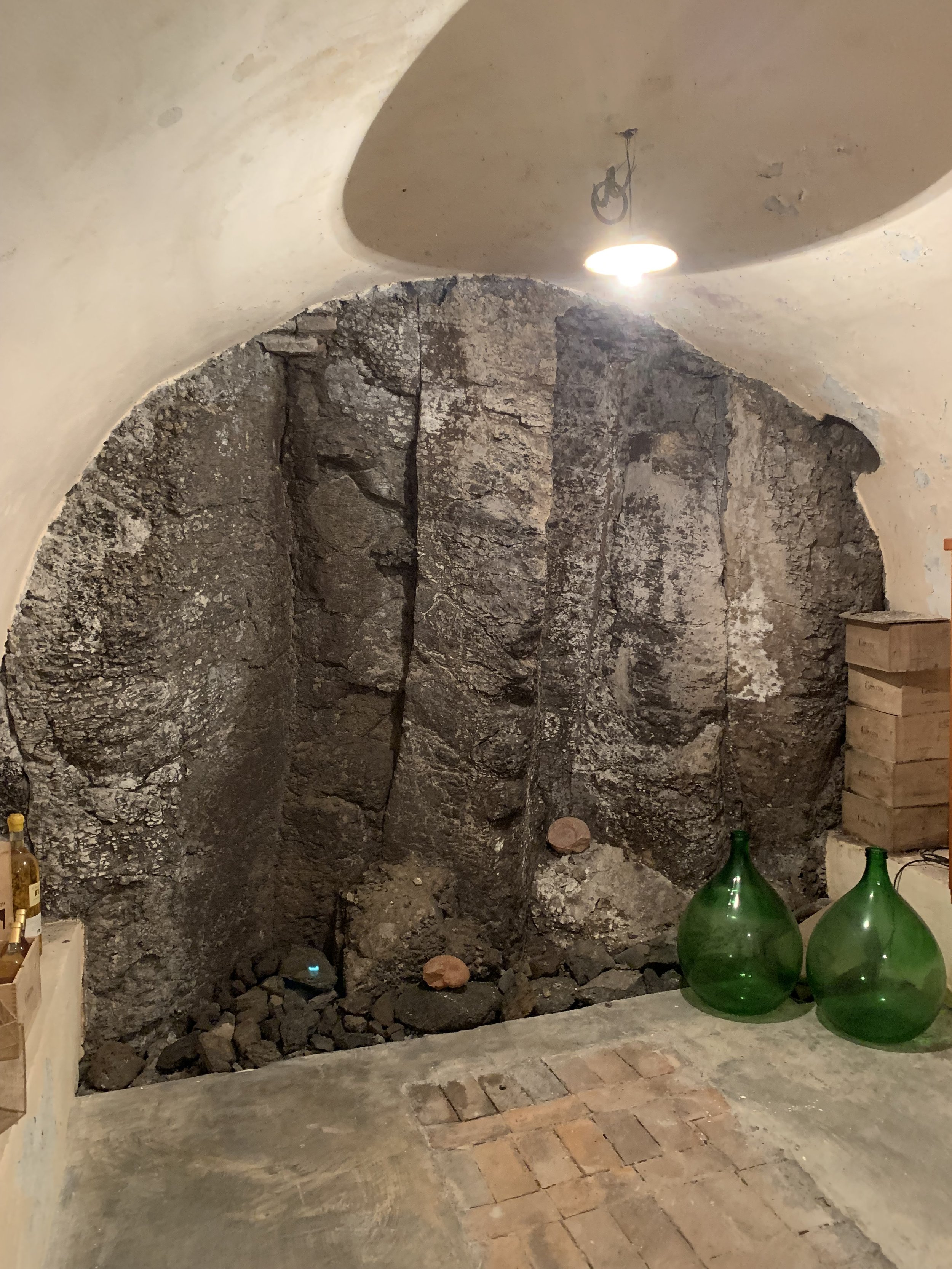
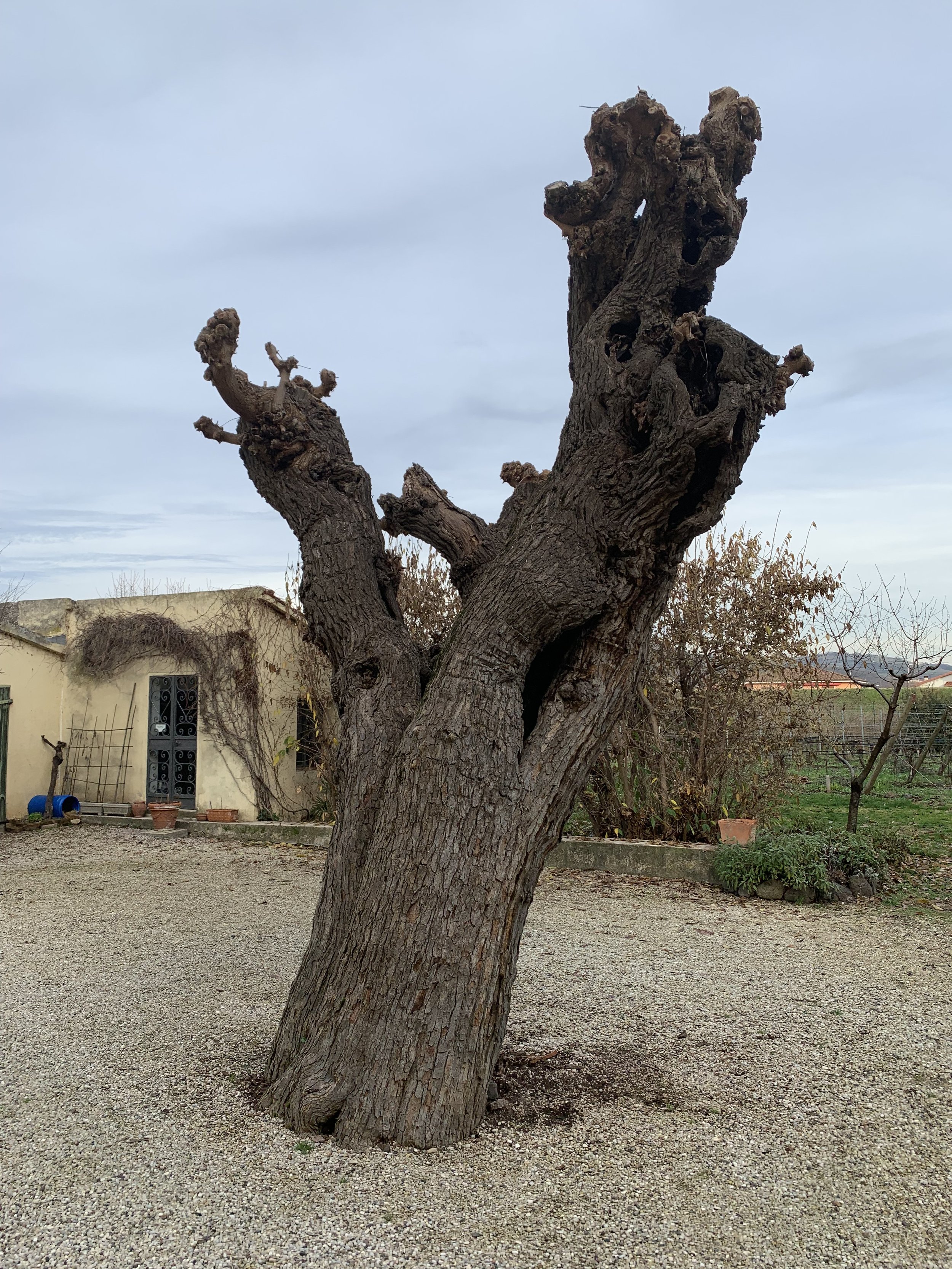
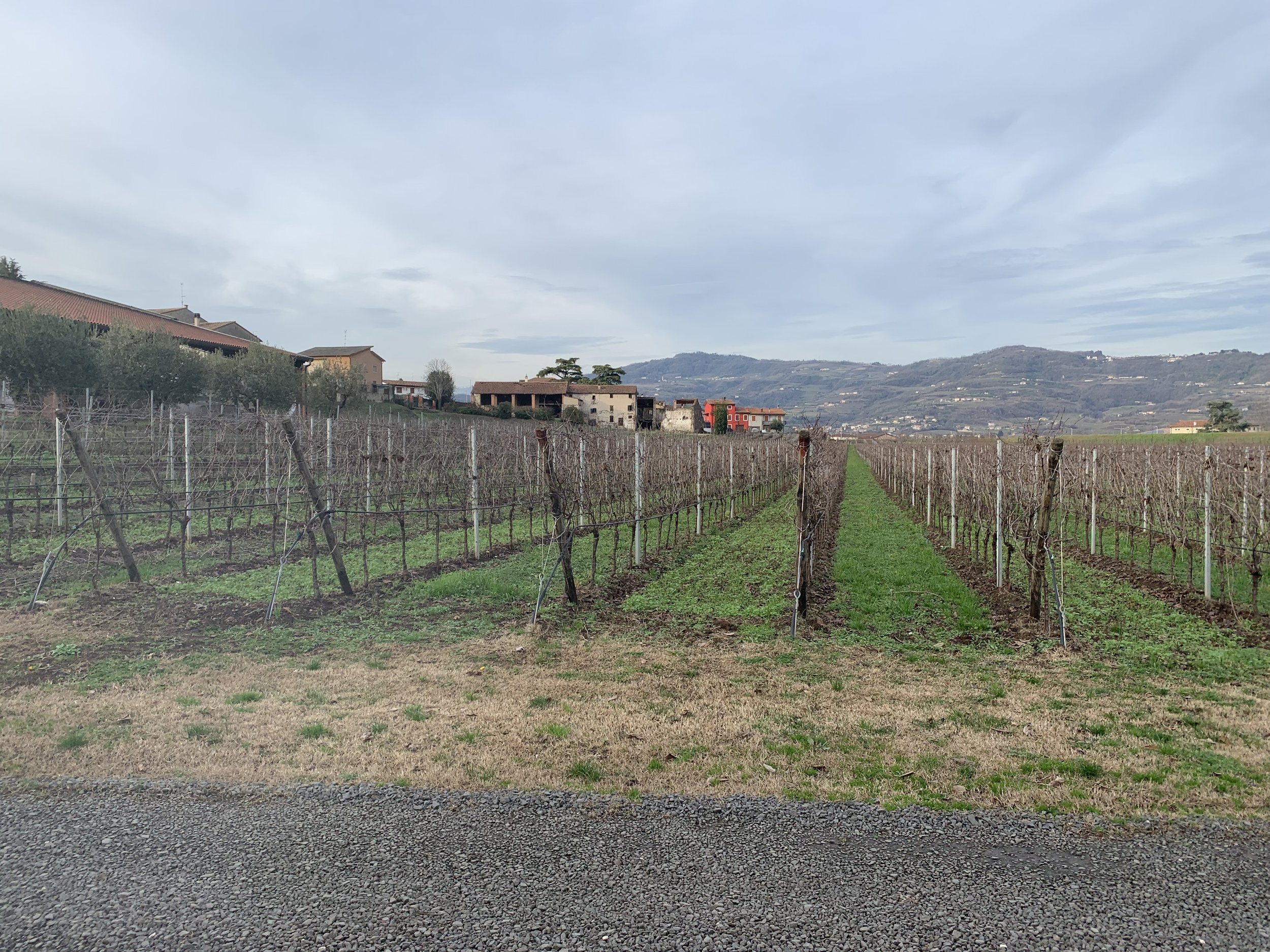
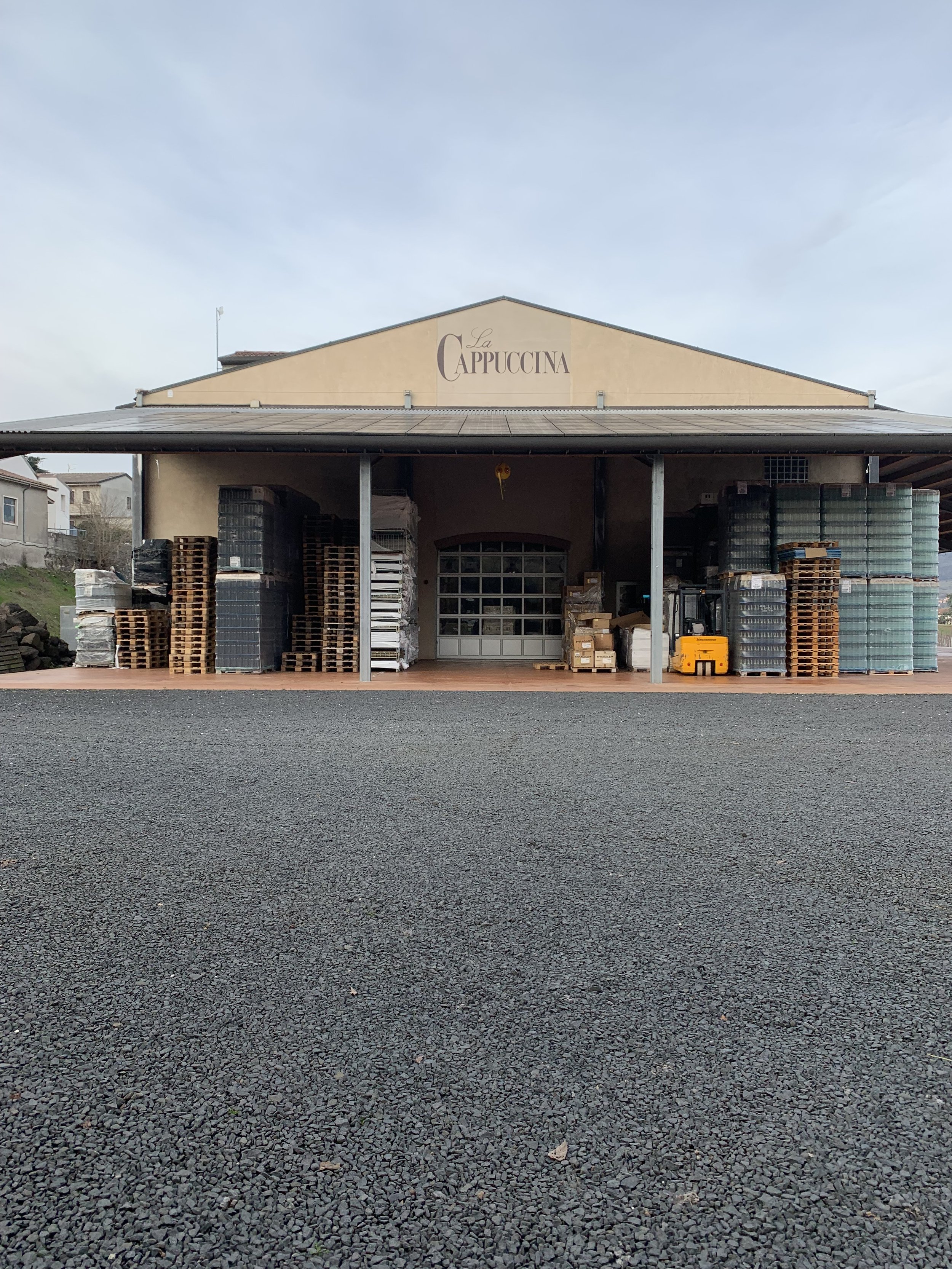
La Cappuccina
Who: Sisto, Elena, and Pietro Tessari.
Where: Monteforte d’Alpone (Veneto, Italy)
What grapes: Garganega, Trebbiano di Soave
Key facts: Certified organic since 1991. The Tessari family use solar panels to power their entire production facility.
Website: https://www.lacappuccina.it
Instagram: @lacappuccina
La Cappuccina Soave DOC
Viticulture: certified organic
Soil type: basalt
Grapes: Garganega/Trebbiano di Soave
Method of fermentation: Temperature-controlled stainless steel with ambient yeast.
Lowish in alcohol (12%) and very accessible. Stone fruit, with a light, mineral finish. Much of La Cappuccina has basalt soil, a reason for the volcanic character evident in the whites.
La Cappuccina “Monte Stelle” Soave Classico DOCG
Viticulture: certified organic
Soil type: black lava
Elevation: from a single high-hillside site
Grapes: 100% Garganega
Method of fermentation: Temperature-controlled stainless steel with ambient yeast. Macerated on the skins, gentle pressing. Matured on the lees in stainless steel.
It’s a single site of pergola-trained vines. In comparison to the Soave DOC it seems angular, crisp, lean, focused. The aromas are pure peach/apricot.
La Cappuccina Pinot Grigio
Viticulture: certified organic
Soil type: basalt lava
Grapes: 100% Pinot Grigio
Method of fermentation: temperature-controlled stainless steel with ambient yeast.
The Pinot Grigio smells of citrus rind. Few whites in the history of our importing business have been so finely tuned for consumption in midsummer’s heat.
La Cappuccina “Filòs” Frizzante Brut
Viticulture: certified organic
Soil type: basalt lava
Grapes: 100% Garganega
Method of fermentation: Charmat method in temperature-controlled stainless steel. All destemmed, and gently pressed. Macerated on the skins. Cold fermentation which takes four months to complete. Filtered once.
The wine has charming mellow white peach aromas. Thirty to forty year-old vines, southeast facing. One hundred percent estate-grown fruit. Harvested at the beginning of September.
La Cappuccina “Arzimo” Recioto di Soave DOCG
Viticulture: certified organic
Soil type: basalt volcanic rock
Elevation:
Grapes: 100% Garganega
Method of fermentation: Temperature-controlled stainless steel with ambient yeast. Harvested into slatted wooden crates, then stored in a “fruttai” drying room to dehydrate. Pressed on Valentine’s Day. Fermented for 14 months, then aged for a year.
Arzimo is dialect for “best bunch.” Recioto is derived from a local word for ear. In the past, the farmers would take off the “ears” of the clusters of grapes, and only use these parts of the fruit. Today, La Cappuccina only harvest fruit for this style of wine that has more space between the grapes, because those bunches dry better. The appassimento drying process (hanging clusters in the eaves of the cellar or barn, to best utilise the wind) is distinct to the territory around Verona.
La Cappuccina have a consecrated chapel on the property. It was built in 1725. Sisto Tessari has letters written by the farm’s owner at that time to the bishop of Vicenza. Sisto’s family purchased the estate in 1890. He’s the 4th generation to run the farm, an endeavor he handles with his sister Elena and brother Pietro.
Capuchin monks once inhabited the domaine, hence its name. Annually on St. John the Baptist’s day, the family re-open the chapel for a service. The day traditionally marks the beginning of veraison, when grapes change color from green to red (or yellow/gold, in the case of Garganega.)
In 1985 Monteforte d’Alpone had a frost that killed all the mulberry trees, except one. Along with the chapel, this lone remaining 300-year-old tree became a symbol of the farm. At that time, Sisto’s father quit working. Sisto used the moment of generational change to plant 10 hectares of vines, and begin organic wine cultivation. He wanted to return the property to the use of natural products, to make its vineyards stronger, and more resistant to temperature fluctuations.
The Tessaris were producers of tobacco until 1960. There’s still a large tobacco barn close to the cellar. The farm also had a history of making silk. In 1985, Sisto planted Garganega, along with Trebbiano di Soave and red grapes (Carmenere, Oceleta). Today, 70% of their production is Soave. The farm now stretches over 30 hectares.
La Cappuccina add green manure to their vines every two years. They cover crop with mustard and other plants that are beneficial to soil health. Sisto uses dry vine cuttings plus cow manure to make compost on the farm. It’s a process that takes one year, but has obvious benefits to La Cappuccina’s microbiome.
The vineyards are trained to the Guyot system of vine trellising, with a density of 5,500 plants per hectare. The harvest is done entirely by hand. All the fruit is destemmed, and pressed in a soft, closed horizontal pneumatic press. Most of the juice sees a little skin contact, so the wine picks up some color.
In 2005, Sisto built a new, simple-but-modern cellar. Much of the facility is underground. Fermentations occur at low temperature (18 degrees Celsius.) Wines are clarified at low temperature in very large (tall) stainless steel tanks. Almost all the wine (95%) is fermented with natural yeast. New wine stays on the fine lees for four to five months.
La Cappuccina uses solar panels to power the entire production facility.




